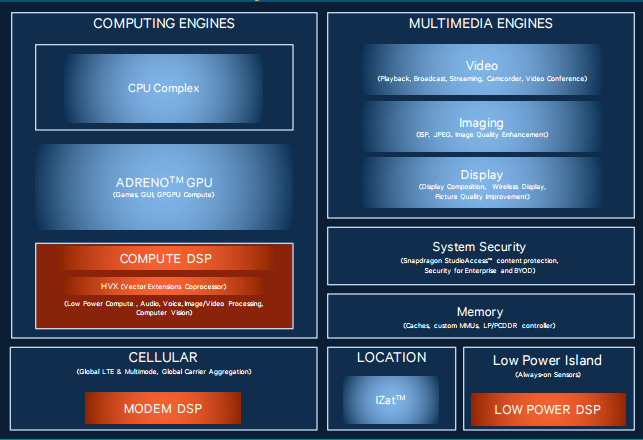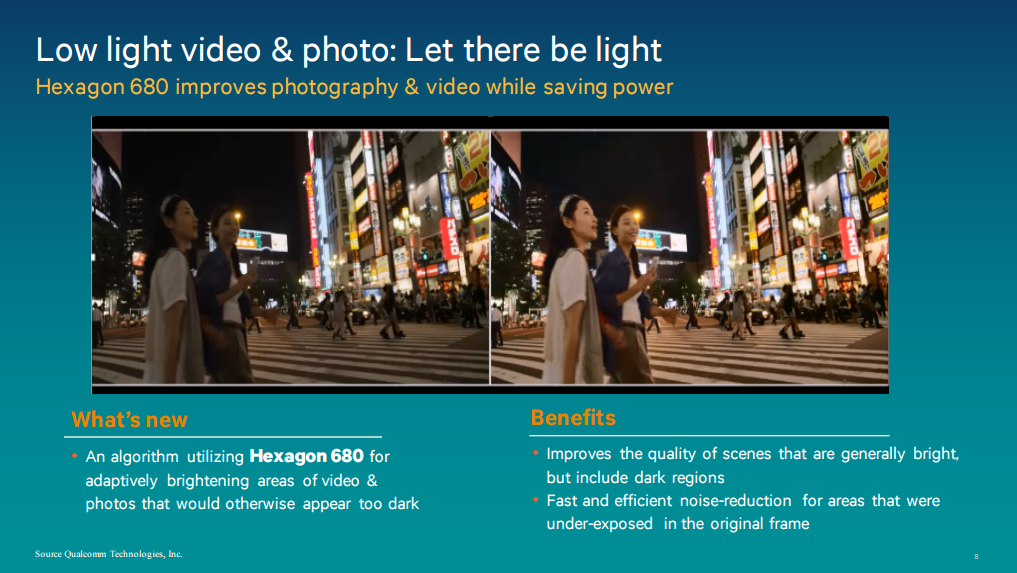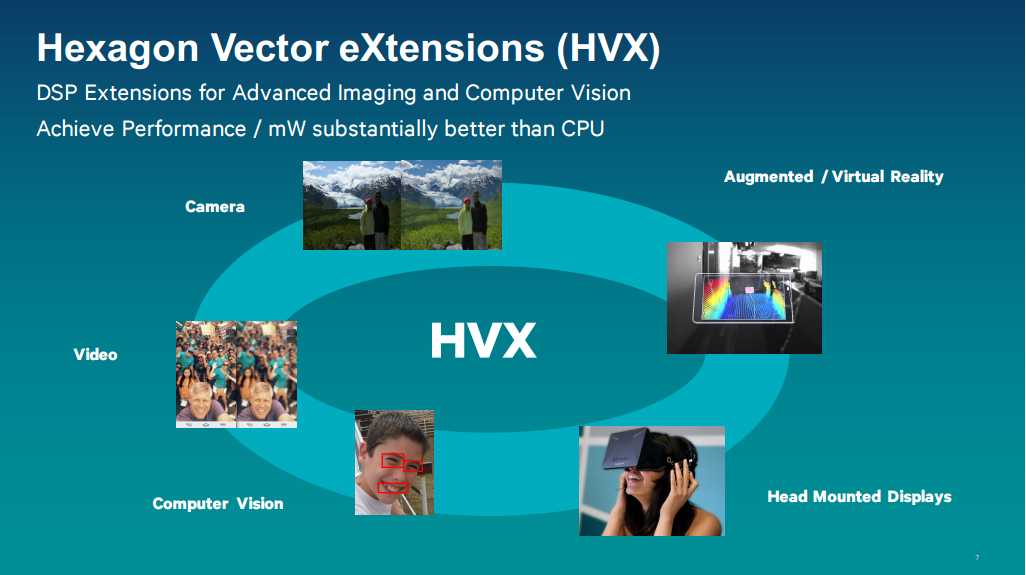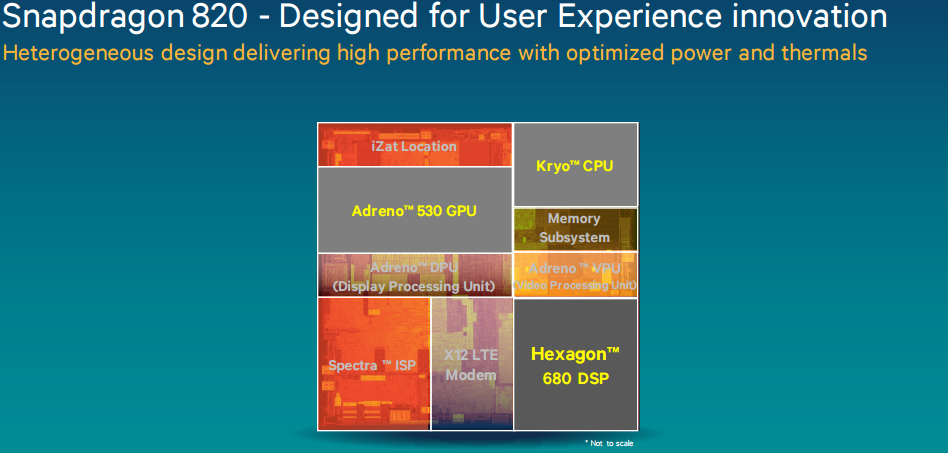Qualcomm Introduces Next-Generation 'Hexagon 680' DSP For Snapdragon 820
Qualcomm announced its next-generation "Hexagon 680" Digital Signal Processor (DSP), which is a specialized type of processor that can do certain tasks many times faster or more efficiently than a CPU.
The new Hexagon 680 DSP is actually a three-part DSP system, where one can process audio, voice, image and video, and it can do computer vision and other low-power compute tasks. Another is a "low power island," which is specifically designated for sensors only, and the last one is a modem DSP that handles global LTE and multimode, as well as carrier aggregation.
The low power island can be used in "always-on" cases, such as for voice recognition, step-counting, sensor-assisted positioning for when the GPS signal is not that strong, and so on. Qualcomm also claimed that this low power island should increase battery life by a factor of three, although it's likely only referring to very specific scenarios such as when it's compared to having the CPU do all of that work. However, whenever such features have arrived in smartphones, they're usually powered by other DSPs anyway.
The main DSP also comes with "Hexagon Vector eXtensions" (HVX), which supports advanced imaging and computer vision when paired with a Qualcomm Spectra ISP. In low-light situations, the Snapdragon 820 chip will use both the Hexagon DSP and the Spectra Image Signal Processor (ISP) to intelligently brighten areas in both images and videos that would otherwise be too dark.
Qualcomm claimed that the new DSP will improve the low-light performance by 3x compared to its old processors and will reduce power consumption by 10x.
Computational photography is one major way in which smartphone cameras can go beyond the limitations of their tiny sensors and inexpensive lenses, and chip makers are just now beginning to scratch the surface with this.
The Hexagon 680 DSP has a highly efficient multi-thread programmable compute engine that is programmed much like a multi-core CPU. It also enables concurrent execution of both audio and imaging tasks, which should increase performance and battery life.
Get Tom's Hardware's best news and in-depth reviews, straight to your inbox.
The new DSP architecture is expected to land in Snapdragon 820 in the first half of next year along with Qualcomm's next-generation Spectra ISP.
Follow us @tomshardware, on Facebook and on Google+.
Lucian Armasu is a Contributing Writer for Tom's Hardware US. He covers software news and the issues surrounding privacy and security.
-
eklipz330 Cool, won't hold my breath on paper releases.Reply
That being said, I am so not excited about seeing facebook and google plus log-ins through the new login portal. I left social media behind me, and tomshardware seems to be one of the few remaining oasis that exist away from social media. Once this website sees enough "visitor" posts, i'm out. the Spam was pretty bad, and only recently has it really died down. -
eldragon0 The last company that tried this.... was Sony with the Cell processor. It worked AMAZINGLY but it was a complete bitch to program for and ultimately died out. I really hope this will be able to run non-proprietary code as well.Reply -
aldaia ReplyThe last company that tried this.... was Sony with the Cell processor. It worked AMAZINGLY but it was a complete bitch to program for and ultimately died out. I really hope this will be able to run non-proprietary code as well.
Anyone owning a smarphone with a qualcom SoC already has 2-3 hexagon DSPs in its pocket.
The Hexagon DSP architecture was introduced in 2006. Hexagon DSPs are included in Snapdragon SoC since then. Hexagon 680 is just the 5th generation (or 6th, I'm not totally sure) of the hexagon architecture.
According to 2012 data, Qualcomm shipped 1.2 billion DSP cores inside its SoCs in 2011, and 1.5 billion cores in 2012, making Hexagon the most shipped architecture of DSP. Although I don't have any data, total Hexagon cores shipped since 2006 could easily be in the 5 to10 billion cores range, probably making it the 3rd most successfull architecture in history (after ARM & x86)



